Rediscovering Victorian Era Trade Cards
Views: 0
Long-Lost Advertising Offers Timeless Art


Chances are that when most people of recent generations hear the term “trade card,” they would associate it with trading cards that encompass baseball or Marvel superheroes. In reality, trade cards, formerly known as advertising cards, were one of the earliest and most dominant forms of advertising.
It highlighted nearly every industry in a most creative manner between lithographic imagery, typography, illustrations, and descriptions with slogans, making them a valuable work of art and collector’s item in today’s society. Their golden age spans 1876 to the early 20th century, and during the Victorian period, it was a tendency for people to collect and preserve keepsakes, as well as trade them.
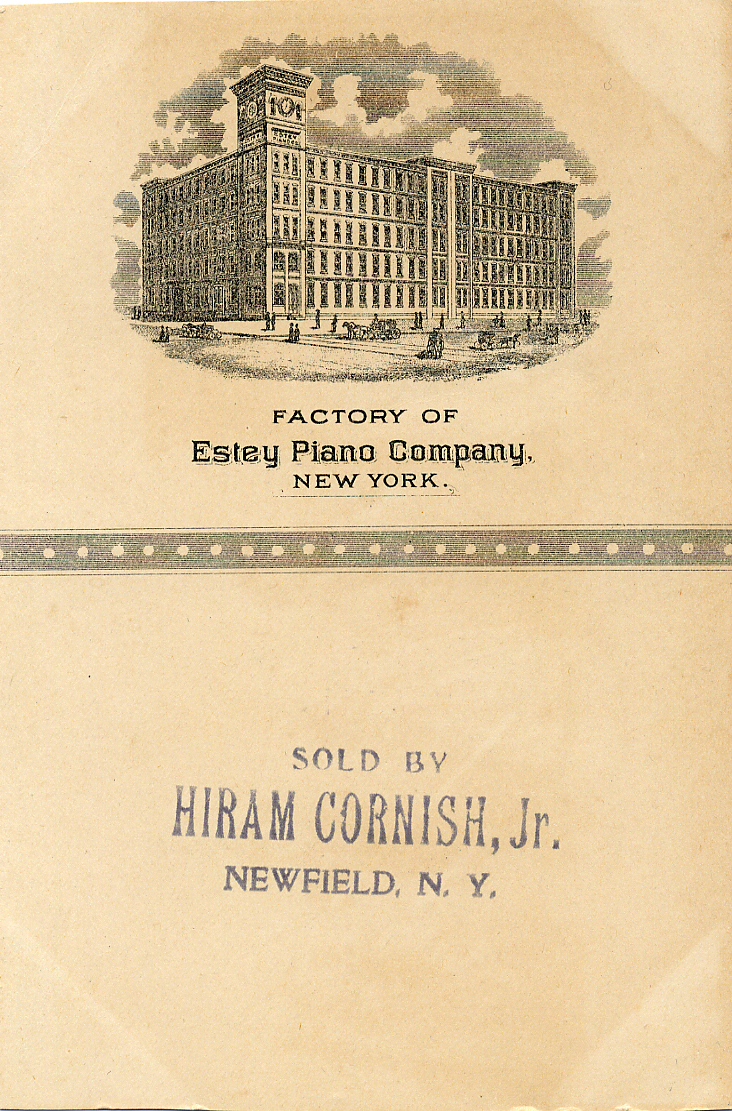
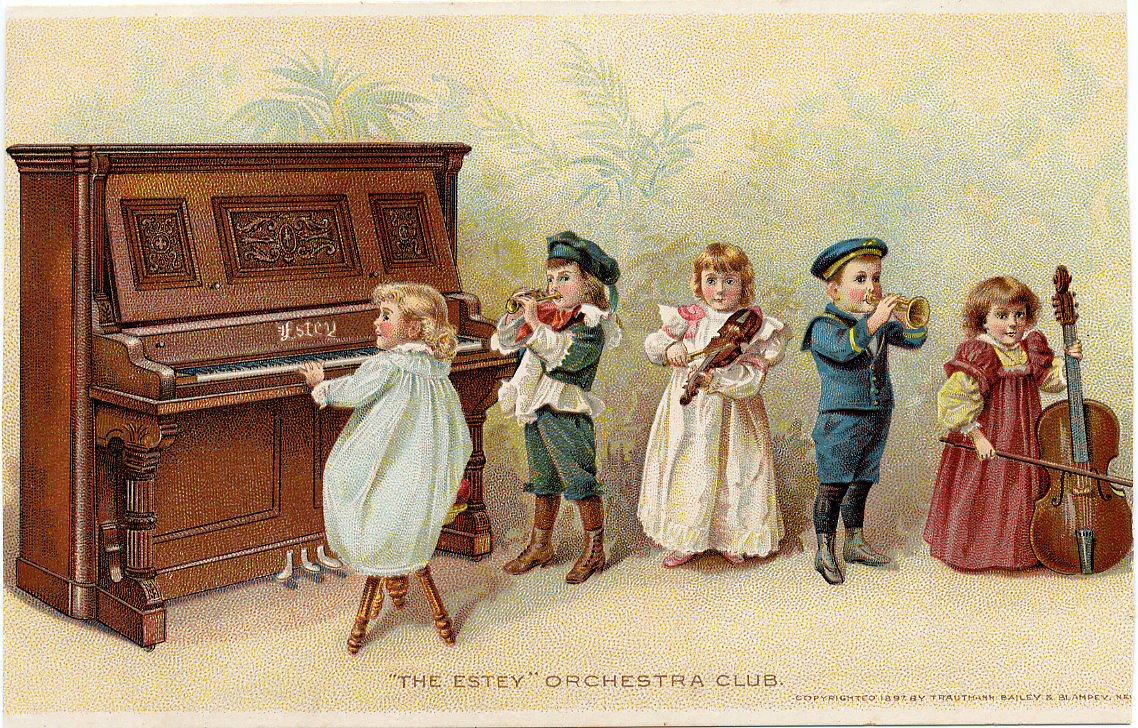
This columnist is a deltiologist, primarily consisting of vintage postcard collection, but owns a small quantity of trade cards. New Yorkers from all boroughs, as well as international residents once distributed and collected trade cards.

If a trade card cannot be found in an album, dusty old chest, drawer, in an attic or basement, or even under a floorboard, a diverse quantity most certainly can be rediscovered at the Metropolitan Postcard Club’s postcard shows at Hotel New Yorker ballrooms or on eBay. They are now viewed as a wonderful means of celebrating culture, and depending on the quality of artistry, subject matter, and if they were produced in scarce quantities, some trade cards can sell for thousands of dollars.
Back in 18th century England, tradesmen would advertise their goods through the use of more basic trade cards. In the mid-1870s, as the technology of lithography experienced a boom, the highly stylized color production of Victorian trade cards was mass-produced. Trade cards also assisted an increase of products at more economical rates, which were manufactured by large factories on the rise, as well as smaller producers with big dreams. The arrival of immigrants in America boosted the need as well.
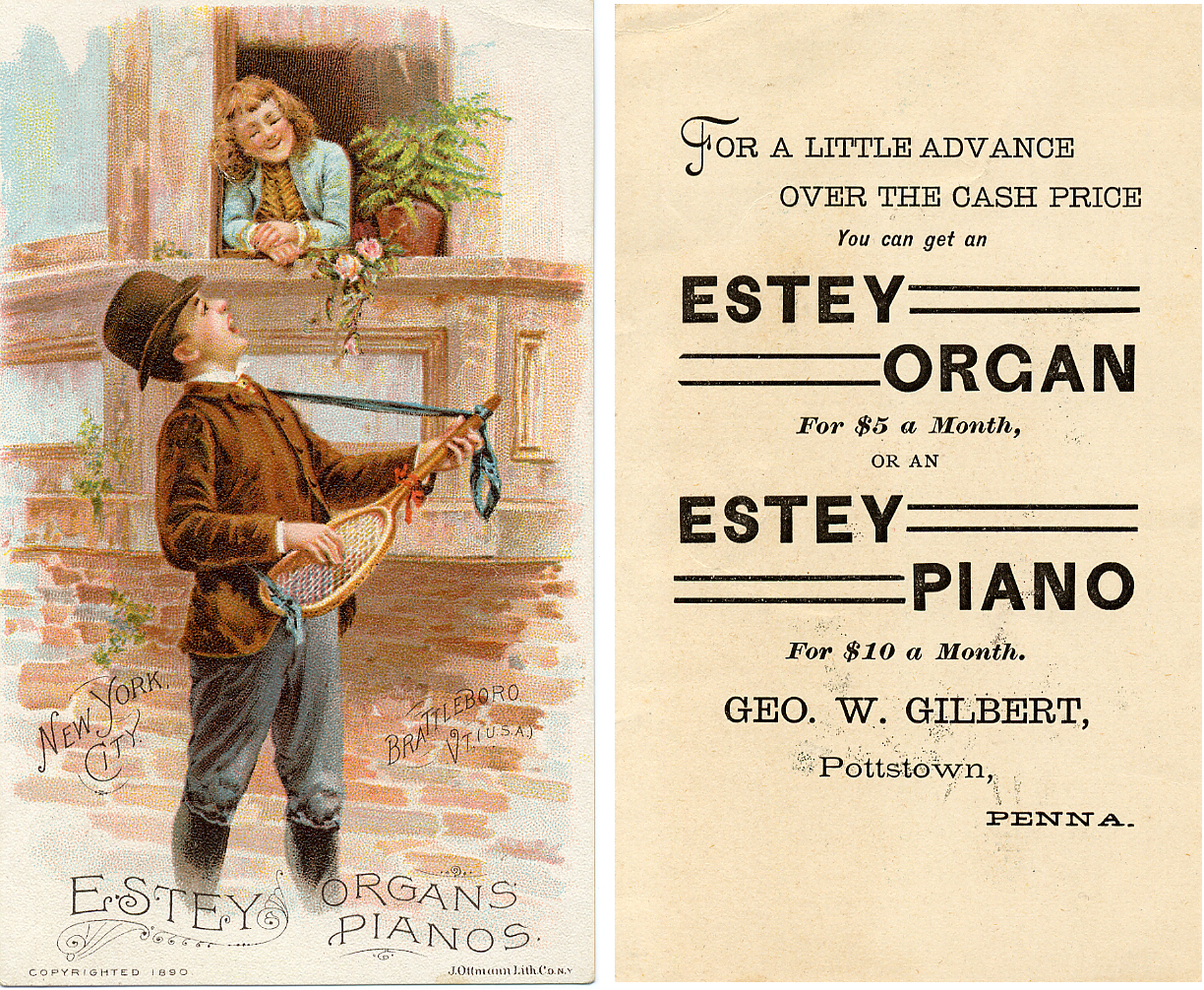
A trade card’s front was largely image-based, whereas the back was text-based. Some popular subjects included clothing companies, hats, medicine, instruments, coffee and tea, sewing, chocolates, stoves, and farming. Their feel ranged from graceful and elegant to humorous, especially in a Victorian-era sense. Sometimes an image was unrelated to the product intended for advertising. They were largely customized for specific products, but occasionally a stock card could be applied for nearly any product. Salesmen would travel and take orders from businesses, and within blank sections on either side, advertisers could incorporate their promotional copy.
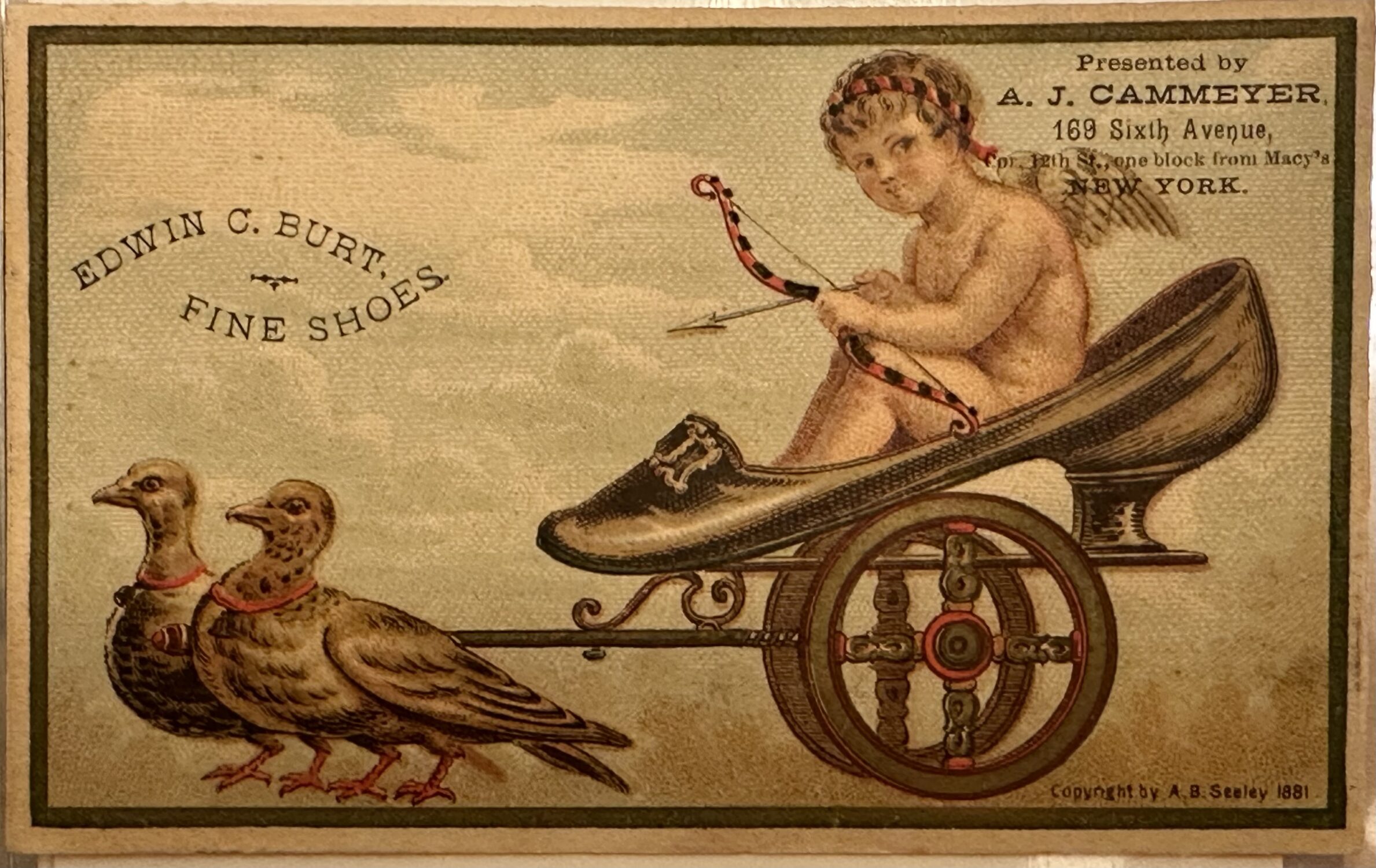
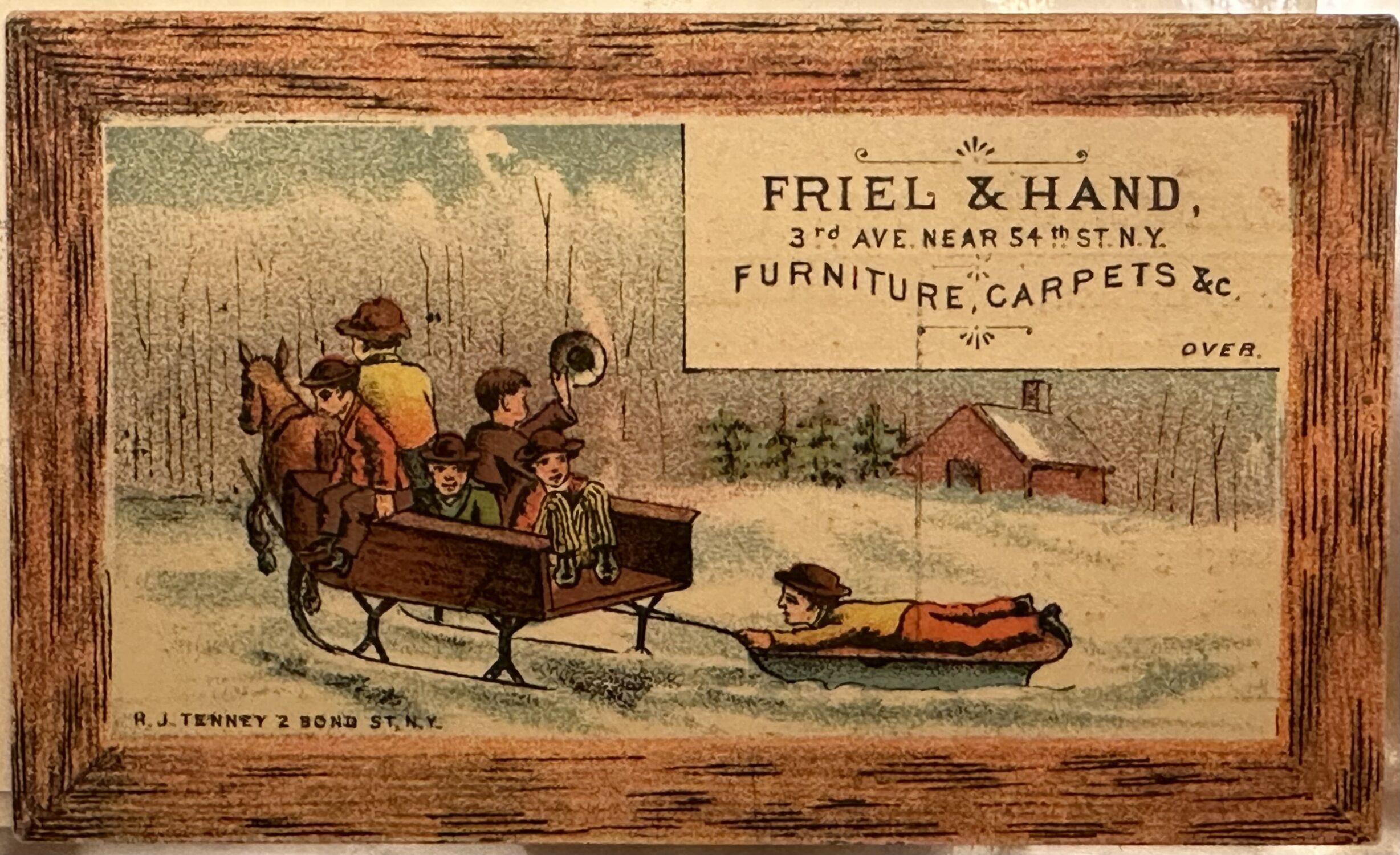
At 3.5 by 4.5 inches, trade cards were larger than most business cards of today, but even larger cards could be found. Besides their typical rectangular shape, there were occasions when die-cut shapes and movable components were produced, increasing desirability for clients, as well as collectors from that period and today.
Trade cards are also associated with notable figures, such as German immigrant Louis Prang of Boston, who is regarded as an early printer to utilize full color on a trade card. He exhibited at the Vienna International Exposition in 1873, and was a prize recipient for his completely colorized advertising trade card. Previously, trade cards were predominantly in black and white, followed by the addition of one color.
An 1800s method of printing trade cards in color is known as chromolithography, which makes use of a flat surface of stones as printing plates. Each color is printed independently, followed by superimposing colors to create a complete colored print. Each color utilizes a separate stone with an image illustrated on it, followed by the stones being individually inked. Each sheet of paper would run across the stones, capturing another color, according to Cornell University.
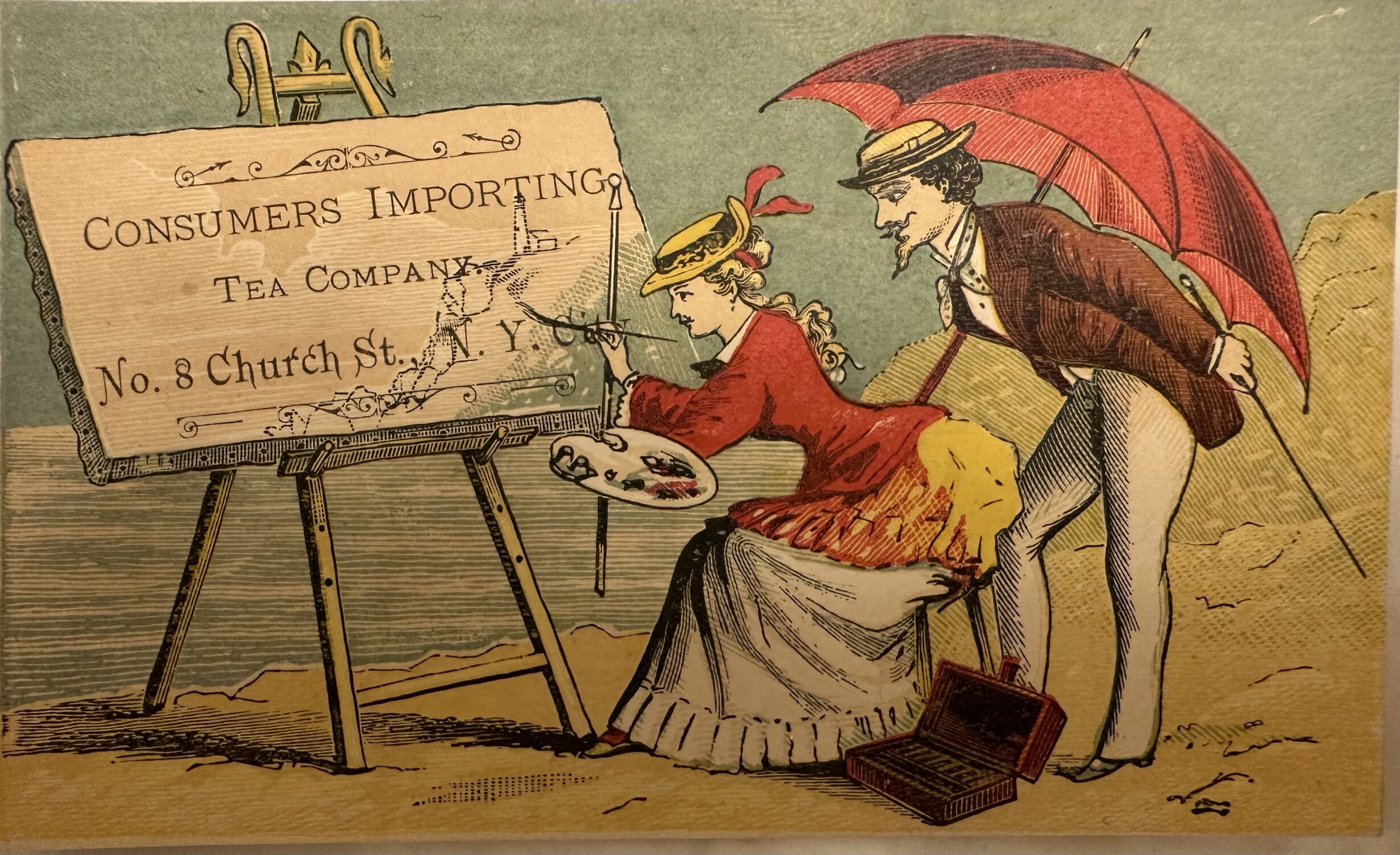
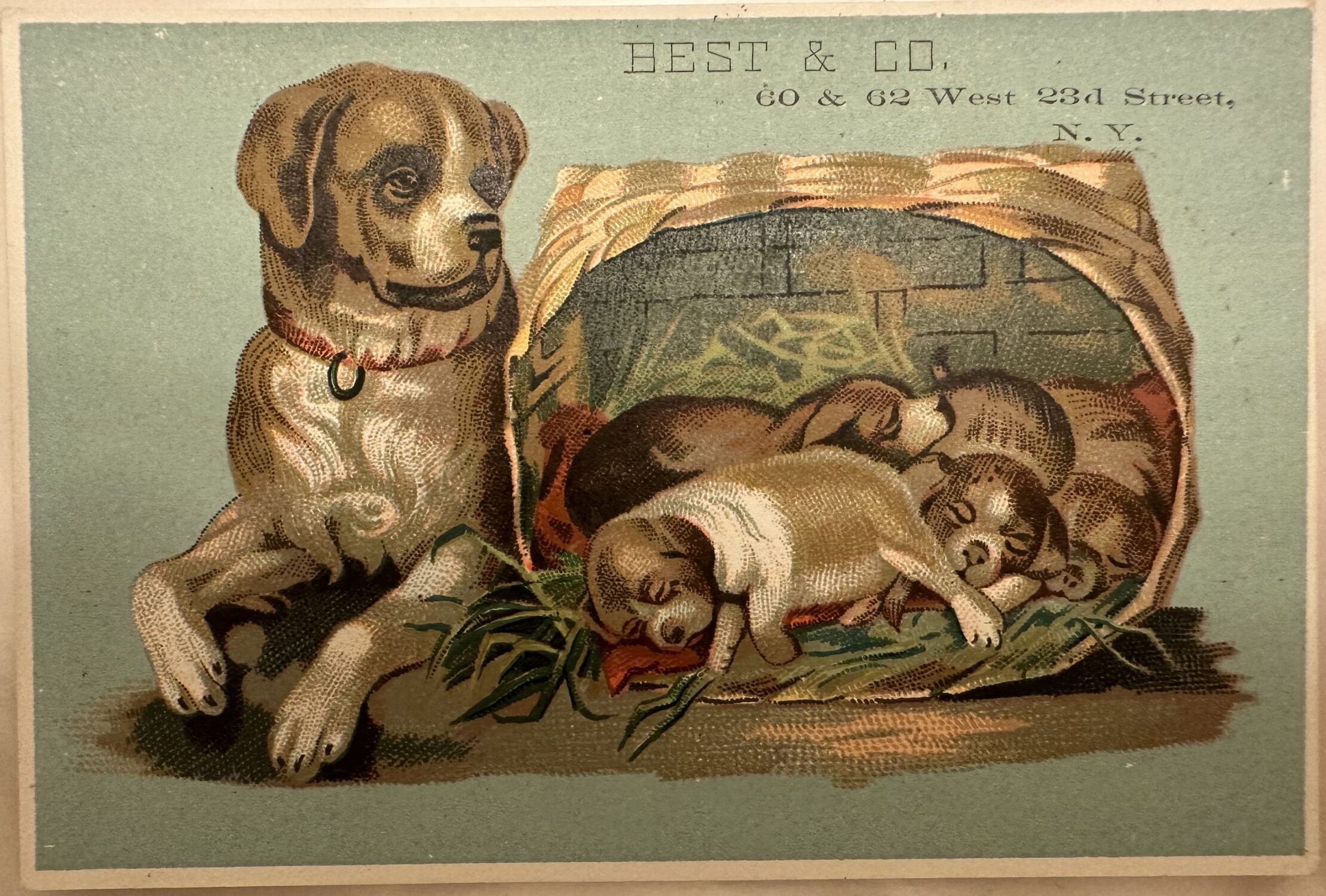
Beginning in the early 20th century, advancements in printing contributed to large-scale color printing in magazines, and halftone newspaper advertisements also took wing. Color printing also became the norm, which eliminated the need for trade card production.
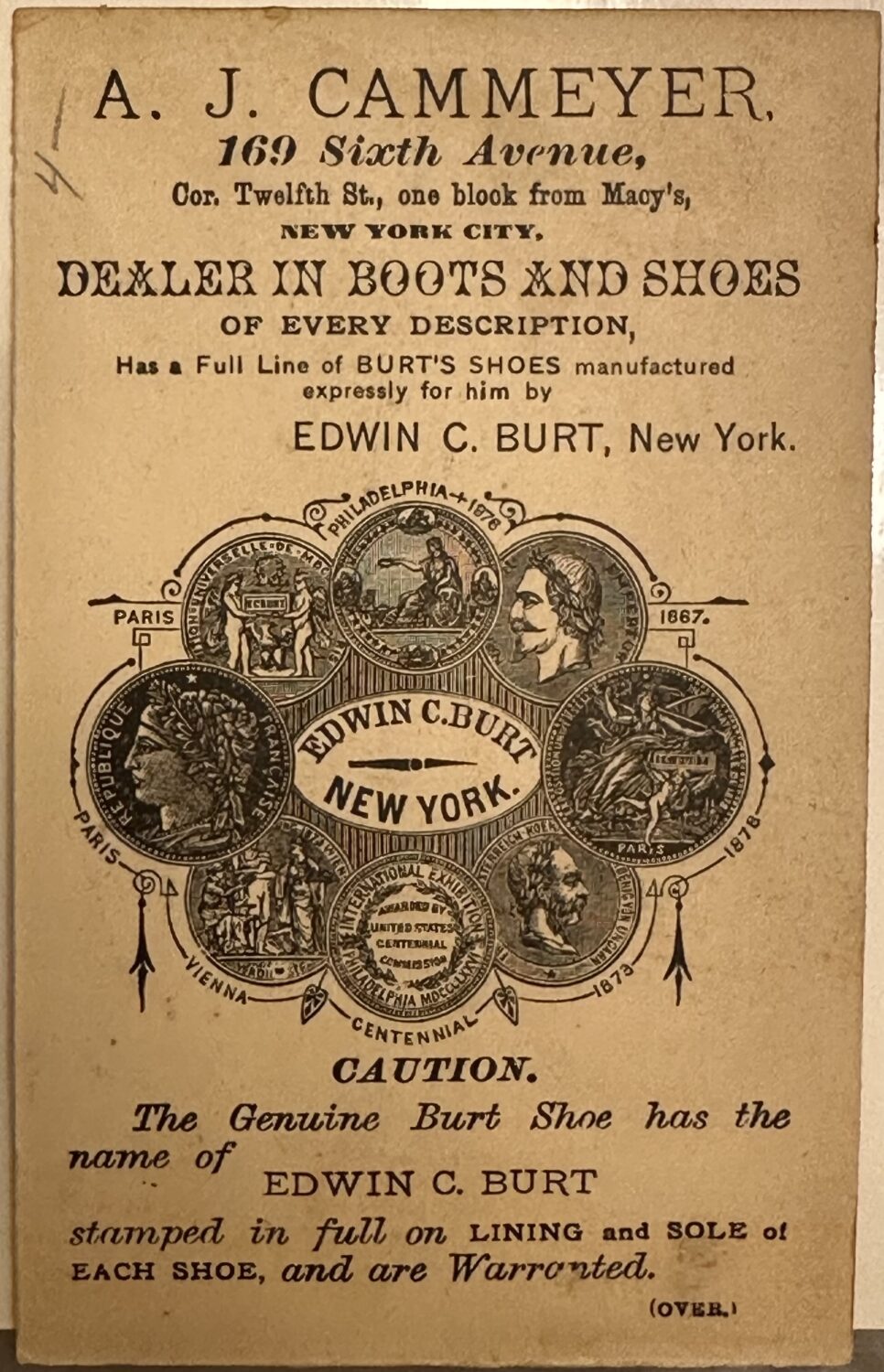
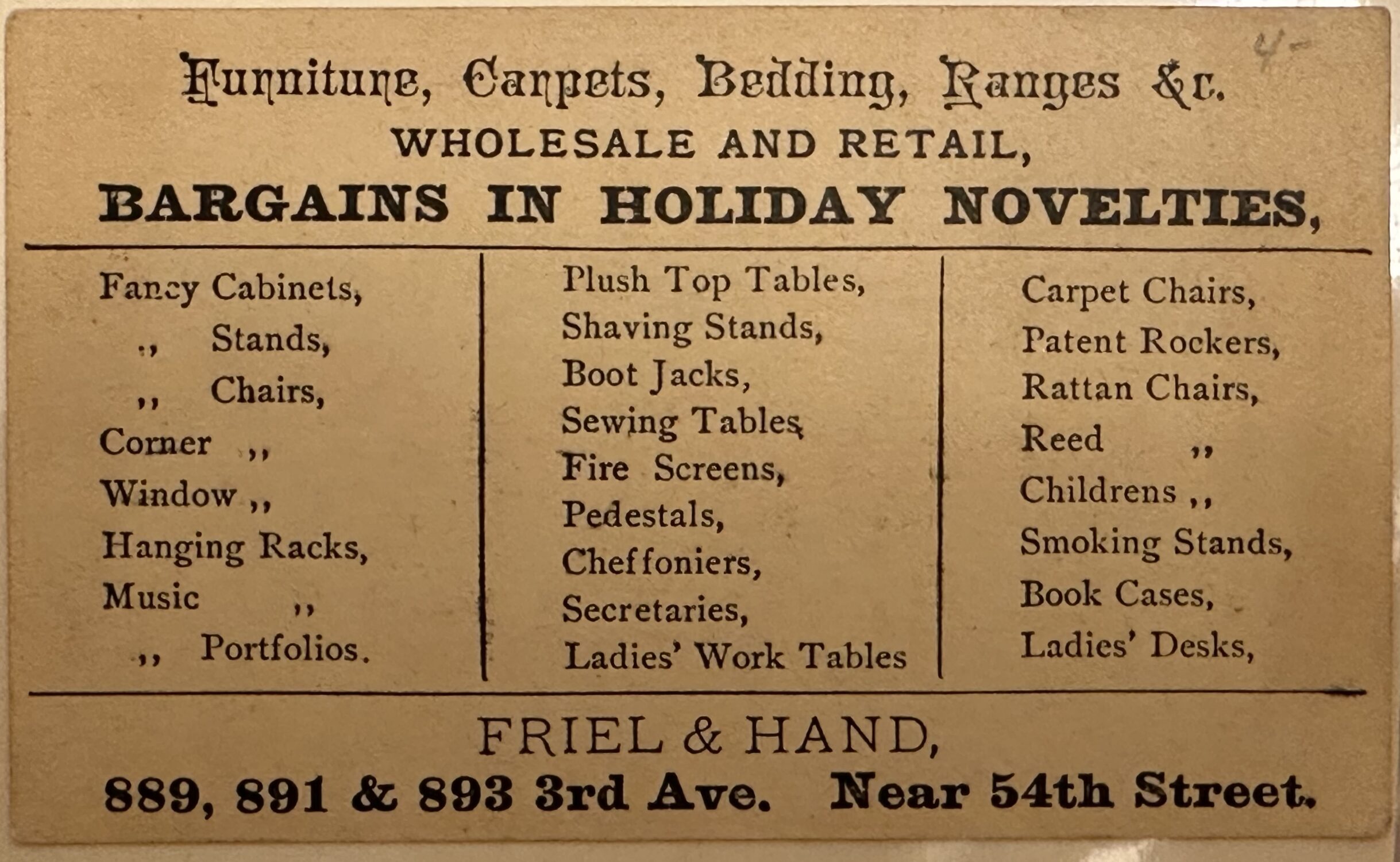




Kamagra pharmacie en ligne: Kamagra Oral Jelly pas cher – Kamagra pharmacie en ligne
Pharmacie sans ordonnance: Meilleure pharmacie en ligne – vente de mГ©dicament en ligne pharmafst.com
acheter kamagra site fiable: kamagra en ligne – kamagra pas cher
http://kamagraprix.com/# Kamagra Commander maintenant
Acheter Cialis: cialis sans ordonnance – Cialis sans ordonnance 24h tadalmed.shop
pharmacie en ligne france livraison internationale: pharmacie en ligne pas cher – pharmacies en ligne certifiГ©es pharmafst.com
http://kamagraprix.com/# kamagra livraison 24h
kamagra livraison 24h: Achetez vos kamagra medicaments – kamagra pas cher
acheter kamagra site fiable: kamagra 100mg prix – Achetez vos kamagra medicaments
http://kamagraprix.com/# kamagra pas cher
Acheter Cialis: Tadalafil 20 mg prix sans ordonnance – Tadalafil achat en ligne tadalmed.shop
kamagra en ligne: kamagra livraison 24h – kamagra gel
https://pharmafst.shop/# п»їpharmacie en ligne france
kamagra 100mg prix: Acheter Kamagra site fiable – kamagra gel
Tadalafil 20 mg prix sans ordonnance: Cialis en ligne – Achat Cialis en ligne fiable tadalmed.shop
http://tadalmed.com/# Pharmacie en ligne Cialis sans ordonnance
Tadalafil 20 mg prix en pharmacie: Cialis en ligne – Acheter Cialis 20 mg pas cher tadalmed.shop
http://tadalmed.com/# Cialis sans ordonnance 24h
pharmacie en ligne france fiable: Meilleure pharmacie en ligne – п»їpharmacie en ligne france pharmafst.com
Tadalafil 20 mg prix en pharmacie: Achat Cialis en ligne fiable – Cialis en ligne tadalmed.shop
https://kamagraprix.com/# kamagra gel
Kamagra Commander maintenant: kamagra oral jelly – kamagra pas cher
pharmacie en ligne fiable: Pharmacies en ligne certifiees – pharmacie en ligne livraison europe pharmafst.com
https://tadalmed.shop/# cialis generique
kamagra pas cher: Kamagra Commander maintenant – kamagra livraison 24h
kamagra en ligne: kamagra gel – Kamagra Oral Jelly pas cher
http://kamagraprix.com/# kamagra 100mg prix
https://tadalmed.shop/# Achat Cialis en ligne fiable
https://pharmafst.com/# pharmacie en ligne livraison europe
Acheter Cialis 20 mg pas cher: Achat Cialis en ligne fiable – Cialis sans ordonnance 24h tadalmed.shop
https://tadalmed.shop/# Acheter Cialis
Acheter Kamagra site fiable: kamagra en ligne – kamagra en ligne
http://tadalmed.com/# cialis prix
Tadalafil 20 mg prix en pharmacie: Tadalafil sans ordonnance en ligne – Cialis sans ordonnance pas cher tadalmed.shop
acheter mГ©dicament en ligne sans ordonnance: Pharmacies en ligne certifiees – pharmacie en ligne france pas cher pharmafst.com
Kamagra Oral Jelly pas cher: Kamagra Oral Jelly pas cher – kamagra gel
Kamagra Oral Jelly pas cher: Acheter Kamagra site fiable – kamagra gel
canada pharmacy: Express Rx Canada – canadian world pharmacy
reliable canadian online pharmacy: canadian pharmacy no scripts – best canadian pharmacy
http://expressrxcanada.com/# canadian pharmacy
canadian pharmacy near me: Canadian pharmacy shipping to USA – safe reliable canadian pharmacy
medicine courier from India to USA: Medicine From India – MedicineFromIndia
http://rxexpressmexico.com/# Rx Express Mexico
indian pharmacy online shopping: indian pharmacy online – medicine courier from India to USA
https://medicinefromindia.shop/# top 10 pharmacies in india
Rx Express Mexico: RxExpressMexico – mexico drug stores pharmacies
mexican rx online: mexico drug stores pharmacies – mexico drug stores pharmacies
medicine courier from India to USA: Medicine From India – MedicineFromIndia
pharmacies in mexico that ship to usa: mexico pharmacies prescription drugs – RxExpressMexico
https://medicinefromindia.com/# medicine courier from India to USA
canadian pharmacy antibiotics: ExpressRxCanada – canadian pharmacy meds
https://expressrxcanada.com/# canada pharmacy world
mexico drug stores pharmacies: Rx Express Mexico – mexico drug stores pharmacies
thecanadianpharmacy [url=https://expressrxcanada.shop/#]Express Rx Canada[/url] canadian pharmacy cheap
https://rxexpressmexico.com/# mexico pharmacies prescription drugs
pharmacy rx world canada: ExpressRxCanada – legit canadian pharmacy online
mexico pharmacies prescription drugs: mexican online pharmacy – mexican online pharmacy
Medicine From India: indian pharmacy online shopping – indian pharmacy online shopping
https://medicinefromindia.shop/# indian pharmacy online
Medicine From India: indian pharmacy online – indian pharmacy online shopping
pin-up: pin up casino – pin up casino
https://vavadavhod.tech/# vavada casino
vavada вход: vavada вход – вавада официальный сайт
vavada: vavada casino – vavada casino
https://vavadavhod.tech/# vavada
вавада казино: vavada casino – vavada вход
пинап казино: пин ап вход – пин ап казино официальный сайт
http://pinuprus.pro/# пин ап казино официальный сайт
vavada casino: вавада зеркало – вавада официальный сайт
pin up [url=https://pinupaz.top/#]pin up az[/url] pin-up casino giris
вавада казино: vavada – вавада зеркало
https://pinupaz.top/# pin up
пин ап зеркало: пин ап казино – pin up вход
pin-up casino giris: pin-up – pin-up casino giris
vavada casino: вавада официальный сайт – vavada вход
http://pinuprus.pro/# pin up вход
пин ап зеркало: пин ап зеркало – пин ап казино официальный сайт
пин ап вход: пинап казино – пинап казино
https://vavadavhod.tech/# vavada
пин ап вход: пин ап казино официальный сайт – пин ап вход
pinup az: pin-up – pin up az
https://pinuprus.pro/# пин ап казино официальный сайт
вавада официальный сайт: вавада казино – vavada
vavada вход: vavada вход – vavada
http://vavadavhod.tech/# вавада казино
вавада зеркало: вавада зеркало – vavada casino
pin up вход: пин ап казино – пин ап казино
https://pinupaz.top/# pin-up casino giris
pin up azerbaycan: pin up casino – pin up azerbaycan
https://vavadavhod.tech/# vavada вход
pin up: pin up azerbaycan – pin-up
вавада: вавада зеркало – вавада зеркало
пин ап зеркало: пин ап казино – пинап казино
пин ап казино: пинап казино – пинап казино
http://vavadavhod.tech/# вавада
pin up вход: пин ап зеркало – пин ап вход
https://vavadavhod.tech/# vavada casino
pin up azerbaycan: pin up casino – pin up azerbaycan
вавада зеркало: вавада – вавада зеркало
пин ап вход: пин ап зеркало – pin up вход
pin-up: pin up azerbaycan – pin up casino
пин ап казино [url=https://pinuprus.pro/#]пин ап зеркало[/url] пин ап казино официальный сайт
https://vavadavhod.tech/# вавада
вавада казино: вавада зеркало – вавада
pinup az: pin up casino – pin up azerbaycan
http://pinuprus.pro/# пин ап казино
пин ап зеркало: pin up вход – пин ап казино официальный сайт
pin up вход: пин ап казино – пин ап вход
http://vavadavhod.tech/# вавада казино
vavada вход: вавада казино – вавада
pin-up casino giris: pin-up – pin up az
https://pinupaz.top/# pin up azerbaycan
pin-up casino giris: pinup az – pin up casino
http://pinupaz.top/# pinup az
пин ап казино официальный сайт: пин ап зеркало – пин ап казино официальный сайт
http://pinuprus.pro/# пин ап зеркало
pin-up: pin up azerbaycan – pin up
пин ап вход: пин ап зеркало – пин ап казино
https://pinupaz.top/# pinup az
пин ап казино: пин ап казино официальный сайт – пин ап казино официальный сайт
pin-up casino giris: pin-up – pin up azerbaycan
https://pinupaz.top/# pin up
пин ап зеркало: пин ап вход – pin up вход
pin up вход: пинап казино – пин ап казино официальный сайт
https://pinuprus.pro/# пин ап казино официальный сайт
вавада: вавада официальный сайт – vavada casino
http://pinupaz.top/# pin up
вавада официальный сайт: вавада зеркало – вавада зеркало
pin up casino: pin-up – pin up az
http://vavadavhod.tech/# вавада казино
вавада казино: вавада зеркало – vavada casino
вавада казино: вавада – vavada
vavada вход: вавада – vavada
pin up azerbaycan: pinup az – pin-up casino giris
https://vavadavhod.tech/# vavada
вавада: vavada – вавада зеркало
http://vavadavhod.tech/# вавада официальный сайт
пин ап зеркало: пин ап зеркало – pin up вход
вавада зеркало: vavada casino – вавада зеркало
вавада официальный сайт [url=https://vavadavhod.tech/#]вавада казино[/url] vavada casino
pin up: pin-up casino giris – pin up azerbaycan
http://pinupaz.top/# pin-up casino giris
vavada: вавада казино – вавада
pin-up casino giris: pin up casino – pin up az
пинап казино: пин ап зеркало – pin up вход
https://pinupaz.top/# pin-up
пин ап казино официальный сайт: пин ап вход – пин ап зеркало
pin-up: pinup az – pin up
пин ап зеркало [url=https://pinuprus.pro/#]пин ап вход[/url] пин ап казино
http://pinupaz.top/# pin-up casino giris
вавада казино: vavada casino – вавада официальный сайт
pinup az: pin up – pinup az
pin up [url=https://pinupaz.top/#]pin up[/url] pin-up
http://pinuprus.pro/# pin up вход
пин ап зеркало: пин ап вход – пин ап вход
вавада казино: vavada – vavada
pin up az [url=http://pinupaz.top/#]pin up azerbaycan[/url] pin-up
https://vavadavhod.tech/# vavada casino
вавада зеркало: вавада официальный сайт – вавада зеркало
пин ап казино: pin up вход – пин ап казино официальный сайт
http://pinuprus.pro/# пин ап казино официальный сайт
вавада зеркало: вавада официальный сайт – вавада зеркало
пин ап зеркало [url=http://pinuprus.pro/#]пин ап казино[/url] pin up вход
http://vavadavhod.tech/# вавада официальный сайт
pin up azerbaycan: pin-up casino giris – pin up
vavada: vavada вход – vavada casino
http://pinupaz.top/# pin up az
pin up azerbaycan: pin up az – pin up az
pin-up casino giris: pin up az – pin up azerbaycan
http://pinuprus.pro/# pin up вход
vavada [url=http://vavadavhod.tech/#]вавада казино[/url] вавада
вавада казино: vavada casino – vavada casino
https://pinuprus.pro/# пин ап зеркало
FDA approved generic Cialis: reliable online pharmacy Cialis – reliable online pharmacy Cialis
secure checkout Viagra: legit Viagra online – cheap Viagra online
https://zipgenericmd.com/# secure checkout ED drugs
no doctor visit required: legit Viagra online – safe online pharmacy
generic tadalafil: secure checkout ED drugs – generic tadalafil
secure checkout Viagra: order Viagra discreetly – buy generic Viagra online
FDA approved generic Cialis: best price Cialis tablets – cheap Cialis online
http://maxviagramd.com/# trusted Viagra suppliers
affordable ED medication: online Cialis pharmacy – generic tadalafil
reliable online pharmacy Cialis: Cialis without prescription – reliable online pharmacy Cialis
cheap Viagra online: legit Viagra online – Viagra without prescription
http://modafinilmd.store/# purchase Modafinil without prescription
cheap Cialis online: cheap Cialis online – order Cialis online no prescription
online Cialis pharmacy: affordable ED medication – best price Cialis tablets
Cialis without prescription: discreet shipping ED pills – generic tadalafil
https://zipgenericmd.shop/# buy generic Cialis online
legal Modafinil purchase: Modafinil for sale – modafinil legality
generic tadalafil: best price Cialis tablets – buy generic Cialis online
best price Cialis tablets: secure checkout ED drugs – online Cialis pharmacy
online Cialis pharmacy: affordable ED medication – affordable ED medication
https://maxviagramd.shop/# same-day Viagra shipping
doctor-reviewed advice: modafinil pharmacy – verified Modafinil vendors
buy modafinil online: safe modafinil purchase – legal Modafinil purchase
http://modafinilmd.store/# buy modafinil online
modafinil legality: modafinil pharmacy – doctor-reviewed advice
no doctor visit required: fast Viagra delivery – order Viagra discreetly
buy generic Viagra online: legit Viagra online – best price for Viagra
http://modafinilmd.store/# verified Modafinil vendors
best price Cialis tablets: Cialis without prescription – affordable ED medication
discreet shipping: generic sildenafil 100mg – order Viagra discreetly
http://zipgenericmd.com/# cheap Cialis online
verified Modafinil vendors: buy modafinil online – doctor-reviewed advice
FDA approved generic Cialis: discreet shipping ED pills – order Cialis online no prescription
online Cialis pharmacy: secure checkout ED drugs – order Cialis online no prescription
http://modafinilmd.store/# modafinil 2025
best price Cialis tablets: generic tadalafil – online Cialis pharmacy
safe online pharmacy: order Viagra discreetly – Viagra without prescription
online Cialis pharmacy: buy generic Cialis online – discreet shipping ED pills
purchase Modafinil without prescription: modafinil legality – legal Modafinil purchase
reliable online pharmacy Cialis: online Cialis pharmacy – best price Cialis tablets
legal Modafinil purchase: purchase Modafinil without prescription – legal Modafinil purchase
generic tadalafil: buy generic Cialis online – online Cialis pharmacy
http://zipgenericmd.com/# buy generic Cialis online
can i buy generic clomid online: cost generic clomid no prescription – can i purchase clomid without prescription
where to buy amoxicillin 500mg without prescription: Amo Health Care – Amo Health Care
https://amohealthcare.store/# how much is amoxicillin
PredniHealth: PredniHealth – PredniHealth
buy amoxicillin canada: Amo Health Care – amoxicillin in india
https://amohealthcare.store/# Amo Health Care
cheapest prednisone no prescription: no prescription prednisone canadian pharmacy – generic over the counter prednisone
Amo Health Care: Amo Health Care – Amo Health Care
Amo Health Care: order amoxicillin online no prescription – Amo Health Care
https://prednihealth.shop/# prednisone for sale
buy amoxicillin without prescription: amoxicillin buy no prescription – Amo Health Care
azithromycin amoxicillin: Amo Health Care – Amo Health Care
can i get clomid without insurance: Clom Health – where buy clomid pills
https://amohealthcare.store/# Amo Health Care
can you buy amoxicillin over the counter: Amo Health Care – Amo Health Care
how can i get generic clomid without dr prescription: can i get generic clomid pill – can i order generic clomid online
PredniHealth: 5mg prednisone – prednisone pak
https://prednihealth.shop/# prednisone 10 mg tablets
cost of amoxicillin 30 capsules: amoxicillin 500 coupon – amoxicillin without rx
https://amohealthcare.store/# Amo Health Care
prednisone 20mg online: PredniHealth – PredniHealth
Amo Health Care: Amo Health Care – Amo Health Care
https://amohealthcare.store/# 875 mg amoxicillin cost
can i order cheap clomid prices: Clom Health – can i get clomid without prescription
https://amohealthcare.store/# generic for amoxicillin
get cheap clomid without rx: Clom Health – where can i get cheap clomid
where to buy tadalafil online: TadalAccess – cialis buy
buying cialis online safely: tadalafil no prescription forum – cialis not working first time
https://tadalaccess.com/# tadalafil citrate bodybuilding
cialis drug: cialis none prescription – buying cialis online safe
cialis max dose: TadalAccess – what is cialis used to treat
https://tadalaccess.com/# best price for cialis
cialis and alcohol: TadalAccess – cialis free trial voucher
https://tadalaccess.com/# cialis indien bezahlung mit paypal
buy cialis no prescription australia: difference between sildenafil tadalafil and vardenafil – brand cialis with prescription
https://tadalaccess.com/# prescription for cialis
tadalafil citrate research chemical: TadalAccess – cialis how long does it last
cialis australia online shopping: cialis premature ejaculation – buy cheap tadalafil online
https://tadalaccess.com/# tadalafil brand name
cialis free trial voucher: canadian online pharmacy cialis – cialis super active real online store
buy cialis online usa: TadalAccess – cialis black review
https://tadalaccess.com/# cialis over the counter usa
cialis what age: Tadal Access – what possible side effect should a patient taking tadalafil report to a physician quizlet
what is the normal dose of cialis: cialis and poppers – when should i take cialis
can you drink alcohol with cialis [url=https://tadalaccess.com/#]Tadal Access[/url] п»їwhat can i take to enhance cialis
https://tadalaccess.com/# evolution peptides tadalafil
buy cialis no prescription australia: cialis alternative over the counter – cialis from canada to usa
is tadalafil as effective as cialis: pregnancy category for tadalafil – canada pharmacy cialis
https://tadalaccess.com/# maxim peptide tadalafil citrate
cialis 5mg price walmart: TadalAccess – when does cialis patent expire
https://tadalaccess.com/# tadalafil tablets 20 mg side effects
what is the active ingredient in cialis: Tadal Access – does tadalafil lower blood pressure
cialis insurance coverage blue cross: Tadal Access – walgreens cialis prices
https://tadalaccess.com/# purchasing cialis
mambo 36 tadalafil 20 mg reviews: TadalAccess – cialis generic for sale
cialis drug: TadalAccess – canadian pharmacy cialis
https://tadalaccess.com/# cheap cialis free shipping
purchasing cialis: Tadal Access – buying cialis in mexico
cialis 20 mg from united kingdom: Tadal Access – cialis buy online
https://tadalaccess.com/# how long does cialis take to work 10mg
cialis effects: cialis pricing – cialis side effect
cialis dosage for ed [url=https://tadalaccess.com/#]Tadal Access[/url] prices on cialis
where can i get cialis: is tadalafil available at cvs – cialis free trial phone number
https://tadalaccess.com/# cialis buy
cialis 5mg daily: cialis 20mg for sale – cialis pharmacy
tadalafil tamsulosin combination: best price cialis supper active – cialis 5mg side effects
https://tadalaccess.com/# cialis vs flomax
cialis online without a prescription: TadalAccess – maximum dose of tadalafil
cialis tadalafil 20mg tablets: TadalAccess – us pharmacy cialis
https://tadalaccess.com/# cialis overdose
cialis online no prescription: cialis walgreens – cialis generic for sale
cialis com free sample: Tadal Access – cialis leg pain
cialis medicare: cheap t jet 60 cialis online – cialis stories
where to buy tadalafil online: TadalAccess – cialis for blood pressure
https://tadalaccess.com/# cialis online with no prescription
cialis 20 milligram: tadalafil generic cialis 20mg – ordering cialis online
buy voucher for cialis daily online: Tadal Access – cialis vs tadalafil
https://tadalaccess.com/# cialis ontario no prescription
cialis over the counter at walmart [url=https://tadalaccess.com/#]Tadal Access[/url] paypal cialis payment
cialis daily: tadalafil citrate – cialis price
https://tadalaccess.com/# can you purchase tadalafil in the us
does cialis make you last longer in bed: cialis voucher – cialis with dapoxetine
https://tadalaccess.com/# generic cialis 5mg
buy cialis with dapoxetine in canada: TadalAccess – 20 mg tadalafil best price
cialis superactive [url=https://tadalaccess.com/#]purchase cialis online cheap[/url] cialis softabs online
best price for cialis: TadalAccess – how long does it take for cialis to take effect
https://tadalaccess.com/# maxim peptide tadalafil citrate
https://tadalaccess.com/# cialis generic cvs
too much cialis: cialis dopoxetine – erectile dysfunction tadalafil
cialis daily vs regular cialis [url=https://tadalaccess.com/#]when will generic tadalafil be available[/url] black cialis
https://tadalaccess.com/# nebenwirkungen tadalafil
difference between tadalafil and sildenafil: TadalAccess – cialis generic
what happens if you take 2 cialis: cialis 20 mg price costco – cheap cialis for sale
https://tadalaccess.com/# how much does cialis cost at walmart
cialis contraindications: TadalAccess – tadalafil cialis
cialis 5mg price comparison: Tadal Access – does cialis make you harder
when should i take cialis: TadalAccess – cheap cialis with dapoxetine
ambrisentan and tadalafil combination brands: Tadal Access – cialis 20mg
https://tadalaccess.com/# cialis online pharmacy australia
cialis sell: tadalafil citrate bodybuilding – tadalafil and sildenafil taken together
cialis no perscription overnight delivery: Tadal Access – buy cialis overnight shipping
https://tadalaccess.com/# overnight cialis delivery usa
is tadalafil available in generic form: TadalAccess – cialis 5mg how long does it take to work
can you purchase tadalafil in the us: TadalAccess – buy cialis tadalafil
buying cialis generic: Tadal Access – buy cialis on line
https://tadalaccess.com/# pastilla cialis
tadalafil dose for erectile dysfunction: tadalafil no prescription forum – order generic cialis
https://tadalaccess.com/# cialis drug
cialis high blood pressure: Tadal Access – stockists of cialis
online cialis australia: TadalAccess – cialis manufacturer coupon
https://tadalaccess.com/# cheap generic cialis
cheap canadian cialis: TadalAccess – cialis tadalafil tablets
maxim peptide tadalafil citrate: TadalAccess – buy cialis on line
cialis side effects: cialis softabs online – cialis 20mg side effects
https://tadalaccess.com/# generic cialis online pharmacy
pictures of cialis pills: Tadal Access – how long for cialis to take effect
cialis for bph: Tadal Access – free samples of cialis
https://tadalaccess.com/# brand cialis
cheap cialis canada: Tadal Access – cialis dapoxetine australia
https://tadalaccess.com/# buy cialis usa
cialis using paypal in australia: Tadal Access – cialis price
https://tadalaccess.com/# tadalafil oral jelly
how much tadalafil to take: cialis or levitra – cialis dosage reddit
canada cialis for sale: canadian cialis – tadalafil 20mg canada
https://tadalaccess.com/# cialis daily review
vardenafil tadalafil sildenafil [url=https://tadalaccess.com/#]Tadal Access[/url] buy cialis without a prescription
cialis generic best price that accepts mastercard: tadalafil 40 mg india – sildenafil vs cialis
https://tadalaccess.com/# buy cialis overnight shipping
cialis ontario no prescription: cialis price comparison no prescription – where can i buy cialis online in australia
cheap generic cialis canada: TadalAccess – sunrise remedies tadalafil
https://tadalaccess.com/# cialis once a day
e-cialis hellocig e-liquid: Tadal Access – does cialis raise blood pressure
https://tadalaccess.com/# cialis 800 black canada
Licensed online pharmacy AU: Medications online Australia – Medications online Australia
Over the counter antibiotics pills: buy antibiotics online uk – Over the counter antibiotics for infection
Over the counter antibiotics for infection [url=https://biotpharm.com/#]buy antibiotics online uk[/url] get antibiotics quickly
Online medication store Australia: Medications online Australia – pharmacy online australia
Over the counter antibiotics pills: buy antibiotics online – get antibiotics quickly
http://biotpharm.com/# Over the counter antibiotics for infection
ed rx online: Ero Pharm Fast – buy ed pills online
how to get ed meds online: online ed drugs – cheapest ed online
Licensed online pharmacy AU: PharmAu24 – Licensed online pharmacy AU
https://pharmau24.shop/# Pharm Au 24
online pharmacy australia: Licensed online pharmacy AU – Discount pharmacy Australia
https://biotpharm.com/# buy antibiotics for uti
PharmAu24: PharmAu24 – Buy medicine online Australia
Medications online Australia: Buy medicine online Australia – Licensed online pharmacy AU
https://biotpharm.shop/# Over the counter antibiotics pills
Online medication store Australia: Licensed online pharmacy AU – PharmAu24
Licensed online pharmacy AU: PharmAu24 – online pharmacy australia
http://pharmau24.com/# Medications online Australia
cheapest online ed meds [url=https://eropharmfast.com/#]Ero Pharm Fast[/url] erectile dysfunction medicine online
A partir do momento em que você começa a lançar seu anzol no Big Splash, você tem a oportunidade de pescar grandes ganhos através das variadas funções especiais de como jogar Big Bass Splash. Confira-as abaixo. O jogo Big Bass Splash possui 10 linhas de pagamento. Porém, não é necessário que uma linha seja completa para obter um pagamento, basta que pelo menos 3 símbolos iguais se alinhem seguindo uma das linhas da esquerda para a direita. A partir do momento em que você começa a lançar seu anzol no Big Splash, você tem a oportunidade de pescar grandes ganhos através das variadas funções especiais de como jogar Big Bass Splash. Confira-as abaixo. O Big Bass Splash slot possui 10 símbolos comuns e dois símbolos especiais do tipo Wild e Scatter. Os primeiros são multiplicadores de aposta e os dois outros ativam recursos especiais como rodadas grátis.
https://wadiastutorials.in/lucky-jet-da-1win-uma-analise-completa-sobre-seu-sistema-antifraude/
A Pragmatic Play é uma das maiores provedoras de jogos de cassino online do mundo, oferecendo uma biblioteca de títulos impressionante, incluindo slots, jogos de mesa e cassino ao vivo. Reconhecida pela inovação e qualidade, a Pragmatic Play entrega jogos com altos RTPs, gráficos imersivos e funcionalidades avançadas, tornando-se uma das favoritas entre os apostadores. Se você procura os melhores slots online, experiências realistas de cassino ao vivo e jackpots progressivos, a Pragmatic Play tem tudo o que você precisa! A Pragmatic Play é uma fornecedora global de jogos de slot online, fundada em 2015, e que rapidamente se tornou uma das líderes da indústria. Seus jogos são desenvolvidos com tecnologia de ponta, inteligência artificial e mecânicas inovadoras, garantindo uma experiência única para os jogadores. A empresa tem licenças em diversas jurisdições regulamentadas, garantindo um ambiente seguro e justo para apostas. Seu portfólio inclui slots, jogos de mesa, cassino ao vivo e até apostas esportivas virtuais.